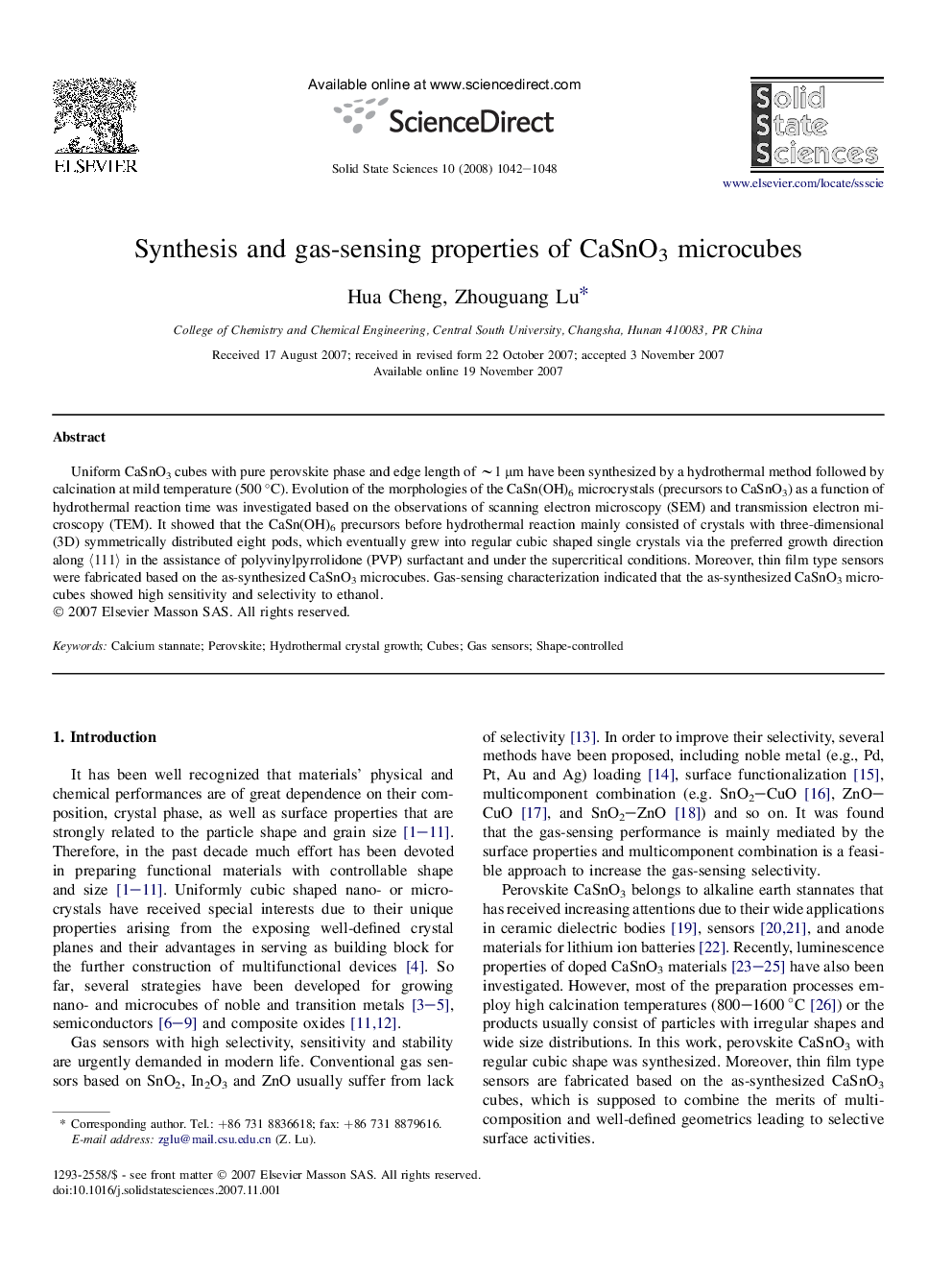| Article ID | Journal | Published Year | Pages | File Type |
|---|---|---|---|---|
| 1506309 | Solid State Sciences | 2008 | 7 Pages |
Uniform CaSnO3 cubes with pure perovskite phase and edge length of ∼1 μm have been synthesized by a hydrothermal method followed by calcination at mild temperature (500 °C). Evolution of the morphologies of the CaSn(OH)6 microcrystals (precursors to CaSnO3) as a function of hydrothermal reaction time was investigated based on the observations of scanning electron microscopy (SEM) and transmission electron microscopy (TEM). It showed that the CaSn(OH)6 precursors before hydrothermal reaction mainly consisted of crystals with three-dimensional (3D) symmetrically distributed eight pods, which eventually grew into regular cubic shaped single crystals via the preferred growth direction along 〈111〉 in the assistance of polyvinylpyrrolidone (PVP) surfactant and under the supercritical conditions. Moreover, thin film type sensors were fabricated based on the as-synthesized CaSnO3 microcubes. Gas-sensing characterization indicated that the as-synthesized CaSnO3 microcubes showed high sensitivity and selectivity to ethanol.
Graphical abstractIn this work, nearly monodispersed CaSnO3 cubes (edge length: ∼1 μm) have been synthesized in high yield by a hydrothermal method followed by calcination process at mild temperature (500 °C). The evolution process of the cubes with reaction time was investigated in detail (see the figure). The as-obtained CaSnO3 cubes displayed high sensitivity, selectivity, and reversibility to ethanol sensing due to a good combination of high specific surface areas, multi-composition and well-defined geometrics leading to selective surface activities of the as-synthesized cubic shape CaSnO3 crystals.Figure optionsDownload full-size imageDownload as PowerPoint slide
